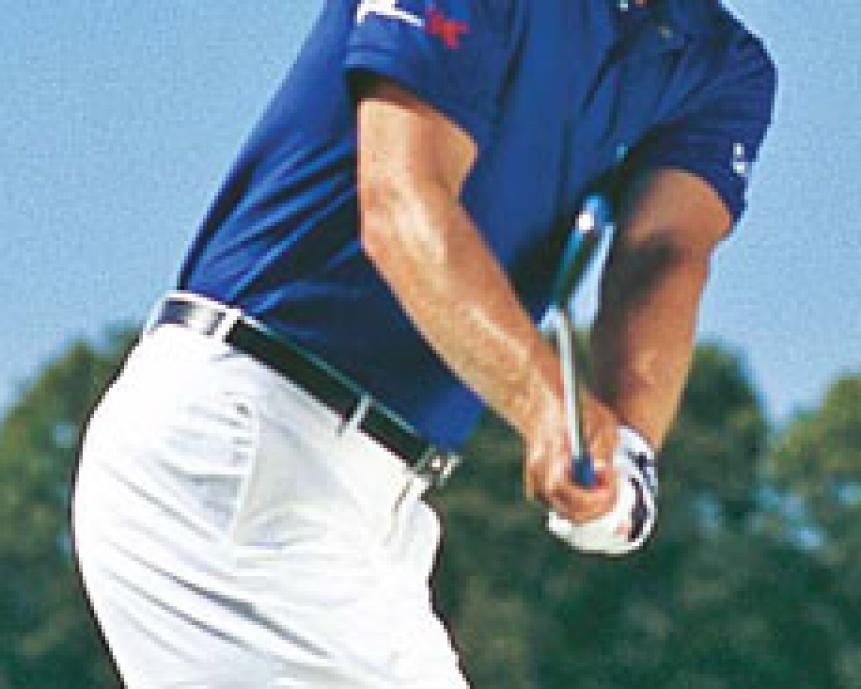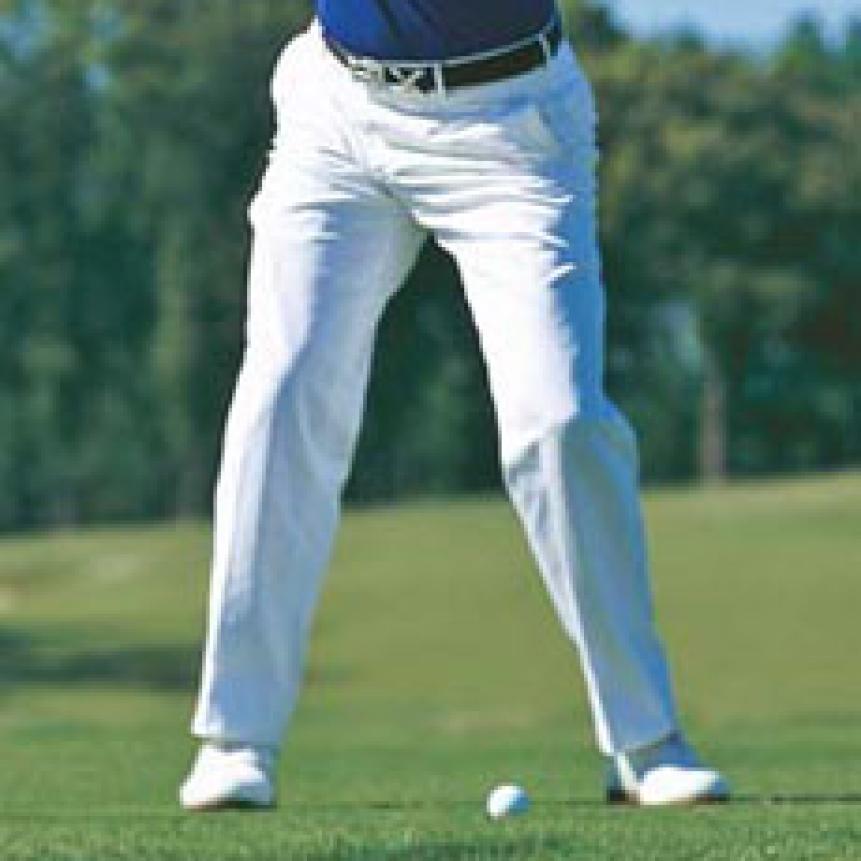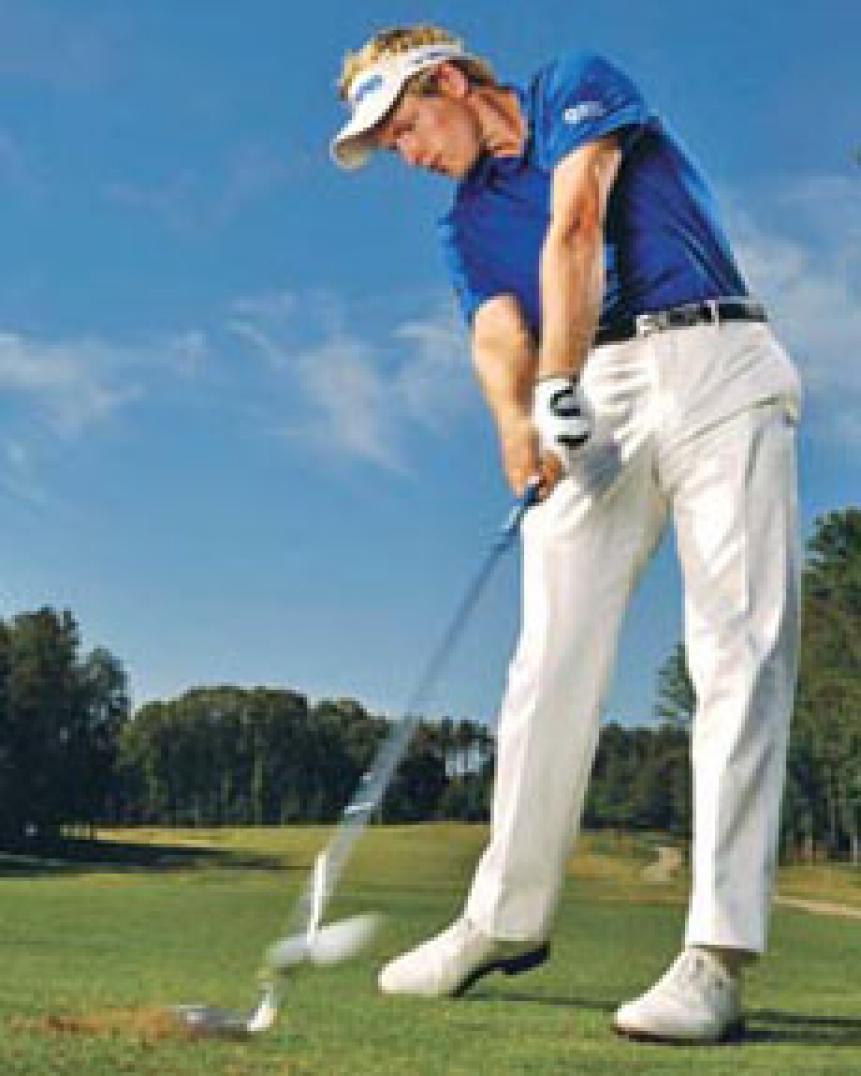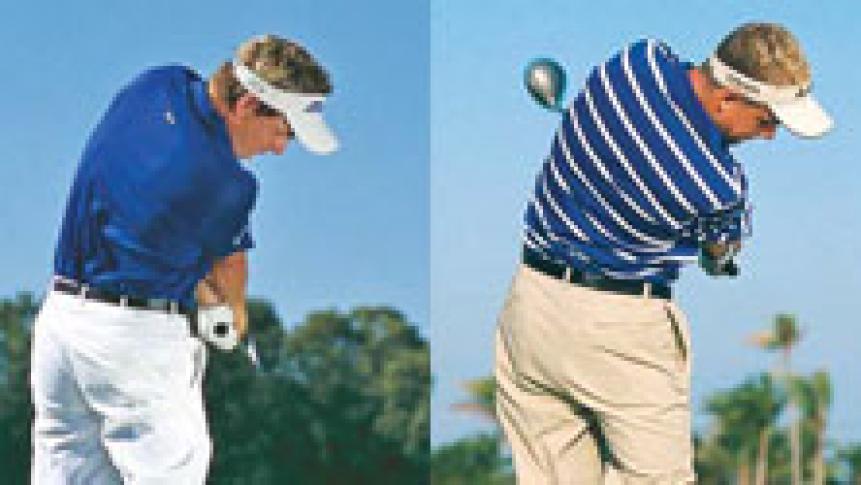Grace, rhythm are his strengths: Having worked with Luke for the last 10 years, since he started at Northwestern, I can honestly say his simple, graceful swing has gotten better with age. He has an innate sense of balance and rhythm, and they are the foundation for why he's had so much success in golf.But as with all great swings, we still strive to make it better. The big key for Luke, and he'll tell you the same thing, is that he needs to work harder on stabilizing his lower body on the downswing. It starts with having too much knee flex at address, although he looks good in these photos. We constantly check for that. But also on the way down, he sometimes drives too hard with his lower body. When he does that, the club shallows out, the face gets closed and the ball flight is left to left. It's a tendency he's had since he was a kid, and we all know that your swing tendencies, good and bad, never really go away.What I'd like to see from Luke is a taller posture at address. I'd also like to see him rotate the clubface open as he takes it to the top of the backswing. Finally, he needs to do a better job of keeping his lower body quiet as he swings down. If he manages all three, he hits a nice, high shot and is as accurate as anyone in the game.What I really like about Luke's swing, and this is something I try to get amateurs to copy, is that he makes a downward strike with his arms into the ball. You can see in this swing sequence that he really compresses the ball at impact. The feeling I'm trying to teach, that Luke does so well, is that the body should feel like it's swinging on an upslope, but the arms should feel like they're swinging down a slope. To help teach this, I built a mat where players hit balls with their feet on an upslope and the ball on a downslope.Pat Goss, the men's golf coach at Northwestern University, has been Donald's swing coach since Donald came to the U.S. from England in 1997. He evaluates Donald's swing:
Instruction
Cool Hand Luke

Open and Shut
The clubface is borderline shut—I'd like to see it pointing more up. But it's a lot better than it used to be. The fact that the face matches his spine angle is good.

Stable Provider
He has made a full turn, but you can see very little movement in his lower body. It's stable. That's what we are looking for. From this position, he should swing down with a quiet lower body.

Hit Down On It
Luke's arms are fully extended as the club works down into the ball. This is what tour pros do and most amateurs don't.

Good Foot Work
Luke has done a nice job of posting on his left leg to generate his power. His right heel is barely off the ground—another sign that he kept his lower body quiet.

No Flipping
When Golf Digest first published Luke's swing in February 2003 (far left), you could see he used to flip the driver inside the target line excessively after impact. Now, I like that the clubhead is still outside his hands (left) and better matches the rotation of his body. He has extended and released the club, but not to the point of hooking the shot.